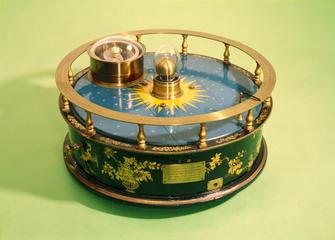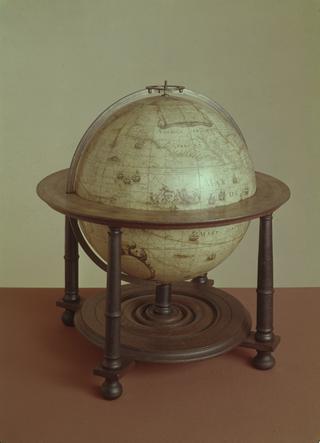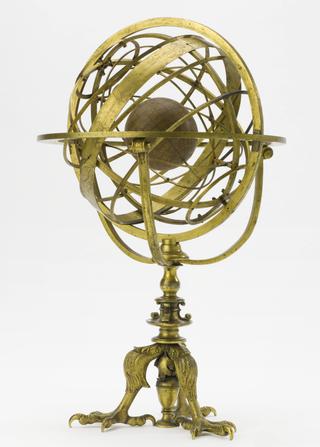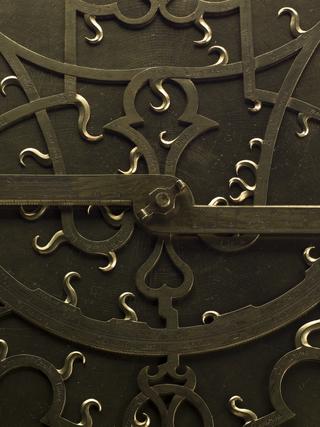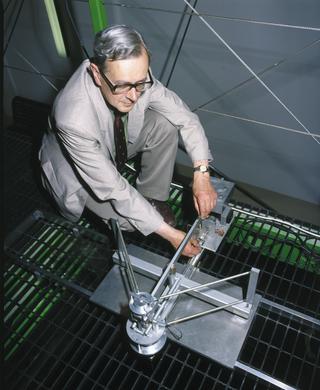
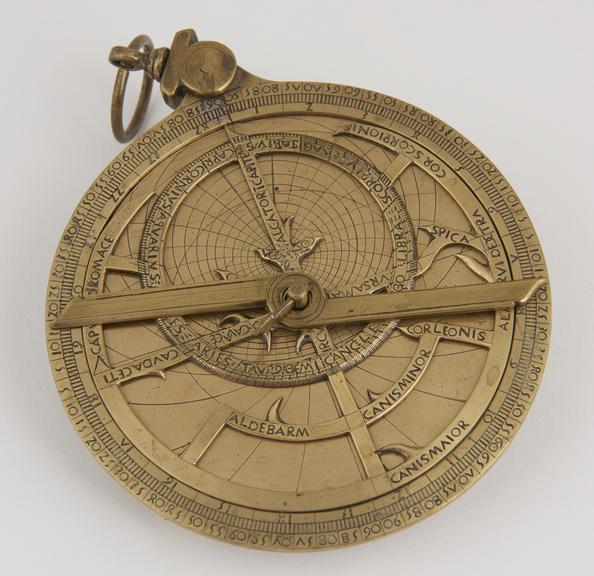
Italian brass planispheric astrolabe with a single plate for the latitudes 42 & 45 degrees and for 48 degrees on the inside of the womb with shadow dial and unequal scale on the reverse, c. 1500, IC 441 [international checklist].
Italian brass planispheric astrolabe with a single plate for the latitudes 42 & 45 degrees and for 48 degrees on the inside of the womb with shadow dial and unequal scale on the reverse, c. 1500
Dated to the start of the sixteenth century, this unsigned brass astrolabe is thought to be Italian in origin. This front view shows the moveable fretwork plate called the rete that denotes star positions by short curved pointers. The astrolabe is in essence a model of the universe that an astronomer could hold in their hands. Popular in Medieval and Renaissance Europe, its many uses included timekeeping, astrology and surveying. The astrolabe is a two-dimensional depiction of the heavens whose layout is achieved using the mathematical technique of stereographic projection. From its origins in the Ancient World, Islamic astronomers developed the astrolabe from where it spread to Europe.
